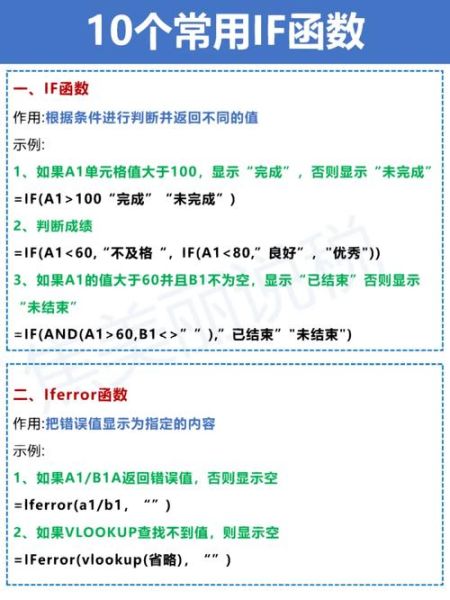在Python中,if-elif-else结构用于根据不同的条件执行不同的代码块,以下是如何表示任意值的示例:
1、使用==,!= 比较操作符
等于 (==):
if x == 5:
print("x is equal to 5")
elif x != 5:
print("x is not equal to 5")不等于 (!=):
if x != 5:
print("x is not equal to 5")
else:
print("x is equal to 5")2、使用比较操作符>,<,>=,<=

大于 (>),小于 (<),大于等于 (>=),小于等于 (<=):
if x > 10:
print("x is greater than 10")
elif x < 10:
print("x is less than 10")
else:
print("x is equal to 10")3、组合逻辑运算符and,or
与 (and):
if x > 5 and x < 10:
print("x is between 5 and 10")
elif x <= 5 or x >= 10:
print("x is not between 5 and 10")或 (or):
if x == 5 or x == 10:
print("x is either 5 or 10")
else:
print("x is neither 5 nor 10")4、使用not 运算符
非 (not):
if not x:
print("x is False, None, 0, or an empty structure")
else:
print("x is True or non-empty/non-zero value")通过上述方法和示例,你可以在Python中实现对任意值的条件判断。
本文来自作者[景行]投稿,不代表智博立场,如若转载,请注明出处:https://zhibor.cn/changshi/202501-17152.html


评论列表(4条)
我是智博的签约作者“景行”!
希望本篇文章《excelif函数 if函数任意值怎么表示》能对你有所帮助!
本站[智博]内容主要涵盖:知识科普
本文概览:在Python中,if-elif-else结构用于根据不同的条件执行不同的代码块,以下是如何表示任意值的示例:1、使用==,!= 比较操作符等于 (==): if x == 5...